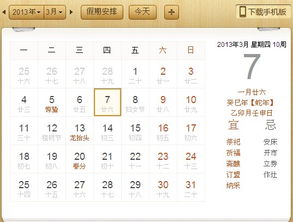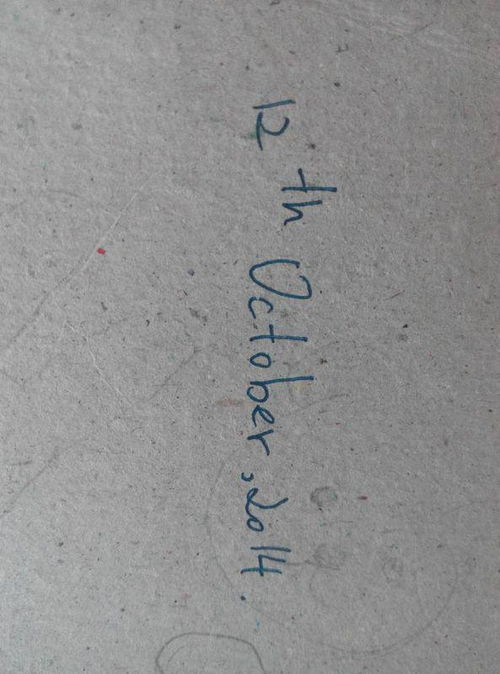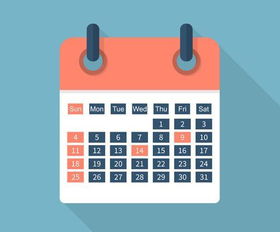What is the date today?
What's Today's Date in English? Unveiling the Intricacies of Date Expression

In the realm of global communication, knowing how to express dates in English is a vital skill. Whether you're engaging in business correspondence, planning international travel, or simply connecting with friends from different parts of the world, mastering the art of date expression can bridge cultural gaps and facilitate seamless understanding. Today, we'll delve into the intricacies of how to convey "today's date in English," exploring various formats, contextual uses, and even some cultural nuances that might influence how dates are perceived and expressed.

The foundation of date expression in English lies in its structure, which typically follows a set format: month, day, and year. However, this can vary depending on the context and the audience you're addressing. For instance, in formal writing or official documents, it's common to see the date presented as "Month Day, Year," such as "January 1, 2023." This format provides a clear and unambiguous representation of the date, ensuring that there's no confusion about the intended time frame.

But what if you want to know "what's today's date in English?" and express it casually, perhaps in a conversation or an informal email? In such cases, you might opt for a shorter version, omitting the year unless it's crucial for context. For example, if today is January 15, you could simply say "January 15th" or, even more casually, "the 15th of January." Note the use of ordinal numbers (1st, 2nd, 3rd, etc.) for the day, which is a common convention in English date expression.

Now, let's break down the months of the year in English and see how they fit into this date-expressing framework. Starting with January, we have the first month of the Gregorian calendar, often associated with new beginnings and resolutions. February follows, bringing Valentine's Day and a shorter number of days (28 or 29, depending on whether it's a leap year). March heralds the arrival of spring in many parts of the world, while April showers bring May flowers—a lovely idiomatic expression that encapsulates the seasonal transition.
June, known for its weddings and summer solstice, is followed by July, a month often synonymous with independence celebrations (in the U.S., for instance). August, with its lazy days and warm nights, gives way to September, a time of back-to-school and the changing leaves. October, November, and December make up the autumn and winter months, each with its own unique festivals and traditions, such as Halloween, Thanksgiving, and Christmas.
When expressing dates within these months, it's important to remember the conventions around abbreviations. While some abbreviations are widely accepted (e.g., Jan. for January, Feb. for February), others may be less familiar or even confusing to some readers. Therefore, it's often safer to spell out the full month name, especially in formal or international contexts where clarity is paramount.
Additionally, there's the matter of date separators. In written English, dates are often separated by slashes (/), hyphens (-), or spaces. For example, "1/15/23" could mean January 15, 2023, but it could also be interpreted as May 1, 2023, depending on the regional conventions. To avoid this ambiguity, it's best to use a format that clearly delineates the month, day, and year, such as "January 15, 2023" or "15 January 2023" (note that day-month-year order is less common in English-speaking countries but is used in some others, like those influenced by the British Empire).
In conversational English, you might hear people use expressions like "today's date" or "the current date" when referring to the date of the day. These phrases are useful placeholders that allow for flexibility in the actual date mentioned. For example, if someone asks you for your birth date in a casual setting, you might reply, "My birthday is on the 23rd of March," omitting the year unless prompted.
Cultural nuances also play a role in date expression. While the majority of English-speaking countries follow a month-day-year format, there are exceptions. For instance, in the United Kingdom and some other Commonwealth countries, it's more common to see dates written in day-month-year order, such as "15/01/23" for January 15, 2023. This can lead to confusion, especially when dealing with international audiences or documents. To mitigate this, it's always advisable to specify the format you're using or to stick with the more universally recognizable month-day-year format.
Moreover, different English-speaking regions have their own idiomatic expressions related to dates. Americans might talk about "the fourth of July" or "the twenty-fifth of December" as shorthand for specific holidays, while Britons might refer to "Boxing Day" (December 26th) or "Guy Fawkes Night" (November 5th) with similar shorthand. Understanding these cultural references can help you connect more deeply with your audience and avoid misunderstandings.
In conclusion, expressing dates in English is a skill that transcends linguistic boundaries, bridging cultures and facilitating communication. By mastering the basics of date structure, format, and cultural nuances, you can confidently navigate various contexts, from formal documents to casual conversations. Remember, the key to effective date expression is clarity and consistency. Always strive to make your dates as unambiguous as possible, and you'll find that connecting with people from all corners of the globe becomes that much easier. So, the next time someone asks you "what's today's date in English?" you'll be ready with a clear and concise answer, no matter the setting or audience.
- 上一篇: 轻盈一词的含义是什么
- 下一篇: 切辣椒后手辣怎么办?
新锐游戏抢先玩
游戏攻略帮助你
更多+-
01/20
-
01/20
-
01/20
-
01/20
-
01/20











